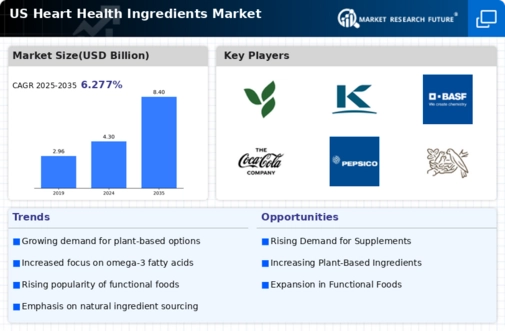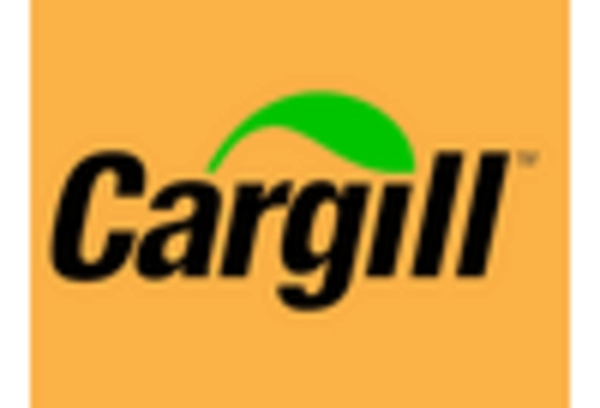Innovations in Product Formulation
Innovations in product formulation are driving the heart health-ingredients market by introducing new and effective ways to incorporate heart-healthy ingredients into everyday foods. Advances in food technology have enabled manufacturers to create products that not only taste good but also deliver health benefits. For example, the development of functional beverages and snacks fortified with plant-based proteins and omega-3s is gaining traction among health-conscious consumers. This trend is supported by research indicating that consumers are willing to pay a premium for products that offer health benefits, with many indicating a preference for functional foods. As innovation continues to shape the market, the heart health-ingredients market is poised for sustained growth.
Increasing Awareness of Heart Health
The growing awareness of heart health among consumers is a pivotal driver for the heart health-ingredients market. Educational campaigns and health initiatives have led to a heightened understanding of cardiovascular diseases and their risk factors. As a result, consumers are increasingly seeking products that promote heart health, such as those enriched with omega-3 fatty acids, fiber, and antioxidants. According to recent surveys, approximately 70% of adults in the US express concern about their heart health, which translates into a rising demand for heart-healthy ingredients in food and supplements. This trend is likely to continue, as more individuals prioritize their cardiovascular well-being, thereby propelling the heart health-ingredients market forward.
Regulatory Support for Health Claims
Regulatory bodies in the US, such as the FDA, are increasingly supporting health claims related to heart health ingredients. This regulatory backing enhances consumer trust and encourages manufacturers to innovate and incorporate heart-healthy components into their products. For instance, the FDA has established guidelines for labeling foods that contain beneficial ingredients like plant sterols and omega-3 fatty acids, which are known to support heart health. This regulatory environment not only fosters transparency but also stimulates market growth, as consumers are more likely to purchase products that are endorsed by credible health claims. Consequently, the heart health-ingredients market is experiencing a surge in product development and marketing efforts aimed at highlighting these health benefits.
Rise of E-commerce and Health Products
The rise of e-commerce platforms has transformed the way consumers access heart health products. Online shopping provides convenience and a wider selection of heart health-ingredients, allowing consumers to compare products and read reviews before making purchases. This trend is particularly relevant in the heart health-ingredients market, where consumers are increasingly looking for specialized products that may not be available in traditional retail settings. E-commerce sales of health products have surged, with estimates suggesting a growth rate of over 20% annually. This shift towards online purchasing is likely to continue, as consumers increasingly prioritize convenience and accessibility, further propelling the heart health-ingredients market.
Aging Population and Health Consciousness
The aging population in the US is a significant driver of the heart health-ingredients market. As individuals age, the risk of cardiovascular diseases increases, prompting a greater focus on preventive health measures. Older adults are more likely to seek out dietary supplements and functional foods that support heart health, such as coenzyme Q10 and fiber-rich products. Data indicates that the population aged 65 and older is projected to reach 80 million by 2040, which will likely lead to an increased demand for heart health ingredients. This demographic shift presents a substantial opportunity for manufacturers to cater to the specific needs of older consumers, thereby driving growth in the heart health-ingredients market.

















Leave a Comment